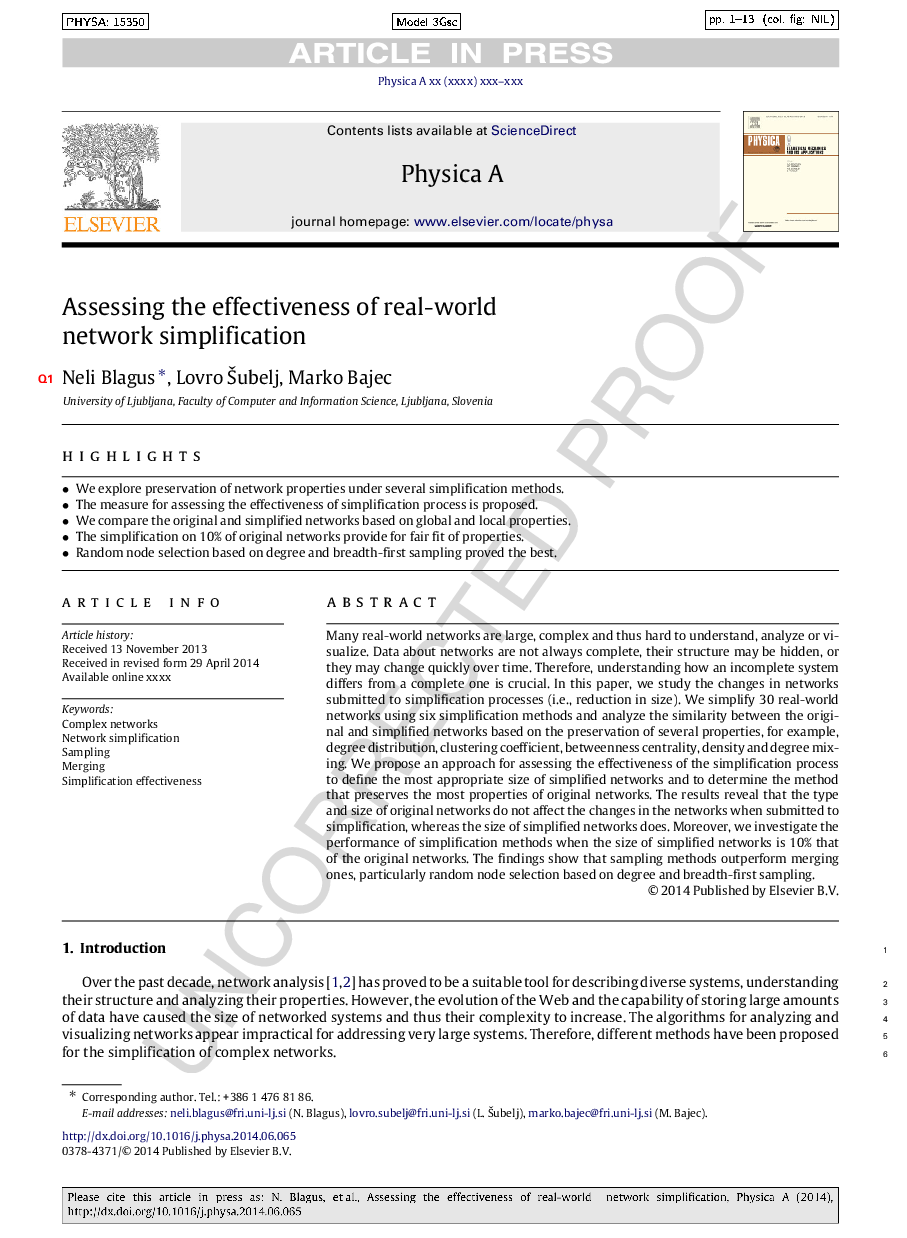| Article ID | Journal | Published Year | Pages | File Type |
|---|---|---|---|---|
| 7380851 | Physica A: Statistical Mechanics and its Applications | 2014 | 13 Pages |
Abstract
Many real-world networks are large, complex and thus hard to understand, analyze or visualize. Data about networks are not always complete, their structure may be hidden, or they may change quickly over time. Therefore, understanding how an incomplete system differs from a complete one is crucial. In this paper, we study the changes in networks submitted to simplification processes (i.e., reduction in size). We simplify 30 real-world networks using six simplification methods and analyze the similarity between the original and simplified networks based on the preservation of several properties, for example, degree distribution, clustering coefficient, betweenness centrality, density and degree mixing. We propose an approach for assessing the effectiveness of the simplification process to define the most appropriate size of simplified networks and to determine the method that preserves the most properties of original networks. The results reveal that the type and size of original networks do not affect the changes in the networks when submitted to simplification, whereas the size of simplified networks does. Moreover, we investigate the performance of simplification methods when the size of simplified networks is 10% that of the original networks. The findings show that sampling methods outperform merging ones, particularly random node selection based on degree and breadth-first sampling.
Keywords
Related Topics
Physical Sciences and Engineering
Mathematics
Mathematical Physics
Authors
Neli Blagus, Lovro Å ubelj, Marko Bajec,
